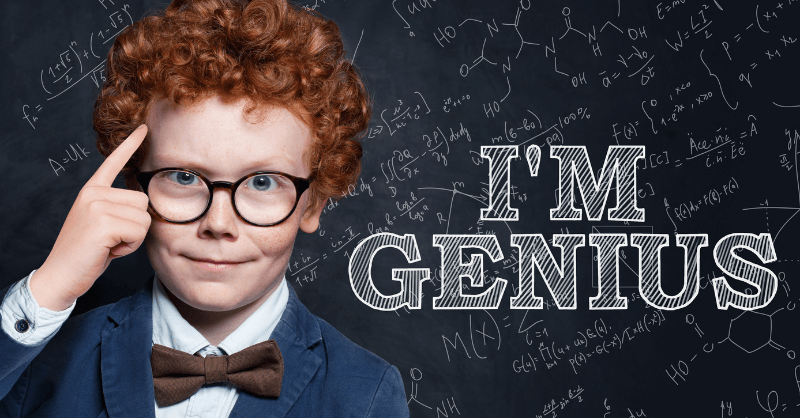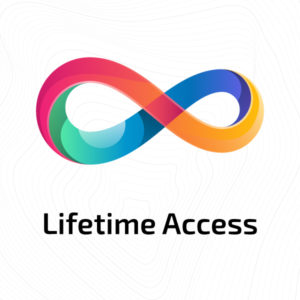What is multimodal learning? Multimodal learning is a dynamic approach that transforms education by engaging learners through multiple sensory channels. It moves beyond traditional text-based methods, incorporating visual aids like diagrams and videos, auditory components such as discussions and music, and kinesthetic activities involving movement and hands-on experiences.
By activating various brain regions, multimodal learning fosters deeper understanding, stronger memory retention, and more effective learning outcomes. The benefits of multimodal learning are far-reaching and applicable in various situations.
The prevalence of online searches for phrases like “write papers for me” highlights students’ challenges with academic writing. The multimodal learning style addresses these challenges by offering diverse research and idea-generation tools.
The Science Behind Multimodal Learning
The human brain is a remarkable organ, adept at processing information from diverse sources. Multimodal learning harnesses this inherent ability by presenting information through multiple channels – visual, auditory, and kinesthetic. This approach aligns with the way our brains naturally learn and process information.
Neural Pathways and Memory
When we encounter information through multiple modalities, it triggers activity in different regions of the brain. For instance, visual information activates the occipital lobe, auditory information stimulates the temporal lobe, and kinesthetic experiences engage the motor cortex.
These diverse neural pathways create a web of interconnected memories, reinforcing learning and enhancing recall. The redundancy in these pathways means that even if one pathway is weaker, others can compensate, ensuring the information remains accessible.
Engagement and Motivation
Varied sensory stimulation is key to maintaining learner engagement. Multimodal learning keeps learners actively involved by appealing to their individual preferences and strengths. The novelty and variety inherent in this approach prevent boredom and fatigue, making learning a more enjoyable and rewarding experience.
Engaged learners are more likely to participate actively, ask questions, and explore topics in greater depth.
Cognitive Load Theory
Multimodal learning also aligns with cognitive load theory, which posits that working memory has limited capacity. By distributing information across different modalities, we reduce the cognitive load on any single channel, allowing learners to process information more efficiently.
For example, combining a visual diagram with a verbal explanation can lighten the load on working memory compared to relying solely on text.
Examples of multimodal learning
The applications of multimodal learning are vast and varied, spanning diverse fields:
Education. Teachers integrate videos, infographics, group discussions, and hands-on activities to create dynamic lessons that cater to a wide range of learning styles. This approach fosters inclusivity, ensuring that every student has the opportunity to learn in a way that resonates with them.
Corporate training.
Interactive simulations, role-playing exercises, and virtual reality experiences are transforming corporate training programs. These immersive experiences enhance engagement, improve knowledge retention, and equip employees with practical skills that can be applied in the workplace.
Therapy.
Multimodal therapy combines cognitive, behavioral, and experiential techniques to address mental health challenges. This holistic approach recognizes the interconnectedness of thoughts, emotions, behaviors, and bodily sensations, providing clients with a comprehensive toolkit for healing and growth.
Museums and cultural institutions.
Multimodal exhibits featuring touch screens, audio guides, and interactive displays offer visitors a multi-sensory journey through history, science, and art. This immersive approach fosters curiosity, encourages exploration, and creates lasting memories.
Language learning.
Combining audio recordings of native speakers with visual aids like flashcards and interactive exercises enhances language acquisition. Kinesthetic activities like role-playing and real-world conversations further solidify language skills.
By embracing multimodal learning, educators, trainers, therapists, and institutions are tapping into the brain’s natural learning mechanisms. They can have experiences that are not only more effective but also more enjoyable and personally relevant for learners.
The Three Core Modalities
Visual Learning
Visuals serve as powerful instruments for learning and knowledge acquisition. Their ability to quickly and effectively convey intricate information is unparalleled, making them indispensable tools in various educational contexts.
One of the visuals’ key strengths is their simplifying complex concepts. The endless possibilities range from static images (photos, diagrams, charts, infographics) to dynamic visuals (videos, animations, simulations).
Each type of visual serves a different purpose, and the choice depends on the specific learning objective, whether it’s simplifying a complex process with a flowchart, illustrating relationships with a diagram, or bringing historical events to life with a timeline.
Effective visuals are clear, concise, and aesthetically pleasing. They should be relevant to the content, use appropriate colors and fonts, and be organized logically. Incorporating visual storytelling techniques and interactive elements can further enhance their impact.
Auditory Learning
Listening is crucial in learning, especially for language acquisition and comprehension. Auditory information can evoke emotions, stimulate imagination, and create an atmosphere. Listening to lectures, discussions, and audio recordings can deepen understanding and provide different perspectives.
Beyond lectures and podcasts, audio can encompass music, sound effects, storytelling, and guided meditations. Each type of audio has unique benefits, and choosing the right one depends on the desired learning outcome.
Clear audio recording and quality sound are essential. Varying voices, tones, and pacing can help maintain interest and attention. Incorporating music strategically can also enhance the learning experience, but choosing music that complements the content and doesn’t distract learners is important.
Kinesthetic Learning
Physical activity is an integral part of the learning process for many learners. Kinesthetic learners, or those who learn best through physical activity, flourish when they can actively interact with the material through hands-on experiences and movement.
Physical activity increases blood flow to the brain, delivering essential oxygen and nutrients that enhance focus, concentration, and overall cognitive function. It also helps learners connect abstract concepts to concrete experiences, making the information more meaningful and memorable.
The range of kinesthetic activities is vast, from simple movement breaks to complex simulations. Experiments, role-plays, building models, dancing, and even field trips can all be part of kinesthetic learning.
Short movement breaks throughout a lesson can help keep learners engaged and energized. Designing activities that require physical interaction with the material, whether manipulating objects or acting out scenarios, can significantly enhance the learning experience for kinesthetic learners.
Combining Modalities for Maximum Impact
The Multimodal Approach
Why is multimodal learning important? The most effective learning experiences often involve a combination of modalities, where visuals are seamlessly integrated with text, audio, and interactive elements, creating a dynamic and multi-sensory learning environment that caters to diverse learning preferences and maximizes engagement.
Engaging multiple senses creates a more holistic and memorable learning experience. The multimodal approach recognizes that learners have different strengths and preferences and aims to cater to all of them.
When we combine visual aids with auditory explanations and kinesthetic activities, we activate different parts of the brain, reinforcing the learning and making it more accessible to a wider range of learners. This approach enhances understanding and fosters deeper engagement and enjoyment of the learning process.
Multimodal learning types and lessons
The versatility of multimodal learning allows it to be tailored to different subjects and learning objectives. Here are a few examples of how this approach can be implemented across various disciplines:
History lesson. A history lesson on ancient civilizations could begin with a visually rich presentation showcasing artifacts, architecture, and maps. This could be followed by an audio recording of a historical narrative or a lecture providing context and details. Students could then engage in a kinesthetic activity, such as constructing a model of a pyramid or participating in a role-play simulation of a historical event.
Science experiment. A science experiment on plant growth could involve a video demonstration illustrating the scientific method and experimental setup. Students then conduct the experiment themselves, manipulating variables, collecting data, and analyzing results through graphs and charts. A group discussion encourages critical thinking as students share their observations, interpretations, and conclusions.
Culinary arts class. A culinary arts lesson on baking bread could start with a visual presentation detailing the ingredients and steps involved. Students then listen to an audio recording of a master baker explaining the techniques and nuances of bread making. The kinesthetic component involves hands-on experience as students knead the dough, shape the loaves, and observe how ingredients turn into a finished product.
Geography lesson. A geography lesson on different biomes could start with a visual presentation showcasing images and videos of diverse landscapes, flora, and fauna. This could be accompanied by an audio recording of natural sounds, such as bird calls or ocean waves, to create an immersive experience. Students could then create a diorama representing a specific biome or participate in a virtual field trip.
Mathematics lesson. A mathematics lesson on geometry could involve a visual demonstration of geometric shapes and their properties using interactive software or manipulatives. An audio recording of a mathematician explaining theorems and concepts could provide additional context. Students could then apply their knowledge through building 3D models of geometric shapes.
Art lesson. An art lesson on different painting techniques could begin with a visual presentation showcasing famous artworks and their distinctive styles. Students could then listen to an audio recording of an artist discussing their creative process and the emotions evoked by their work. The kinesthetic component would involve hands-on experimentation with different mediums and techniques.
Music lesson. A music lesson on different musical genres could involve listening to audio recordings of diverse musical styles, from classical to jazz to pop. A visual presentation could highlight the instruments used in each genre and their unique sounds. Students could then learn to play a simple rhythm or melody on a percussion instrument or create a dance routine inspired by a particular musical style.
These examples demonstrate how a multimodal approach helps make learning more engaging, accessible, and memorable for students of all ages and abilities.
Conclusion
In conclusion, multimodal learning means a powerful educational approach that harnesses the full potential of human senses and cognition. While creating and implementing multimodal content can be challenging, the benefits outweigh the costs. As technology advances, we can expect multimodal learning strategies to become even more immersive, personalized, and accessible, paving the way for a more engaging and effective educational future for all.
Embracing multimodal learning is not just a trend; it’s a fundamental shift in how we approach education, one that promises to unlock the full potential of every learner.


 July 30, 2024
July 30, 2024














